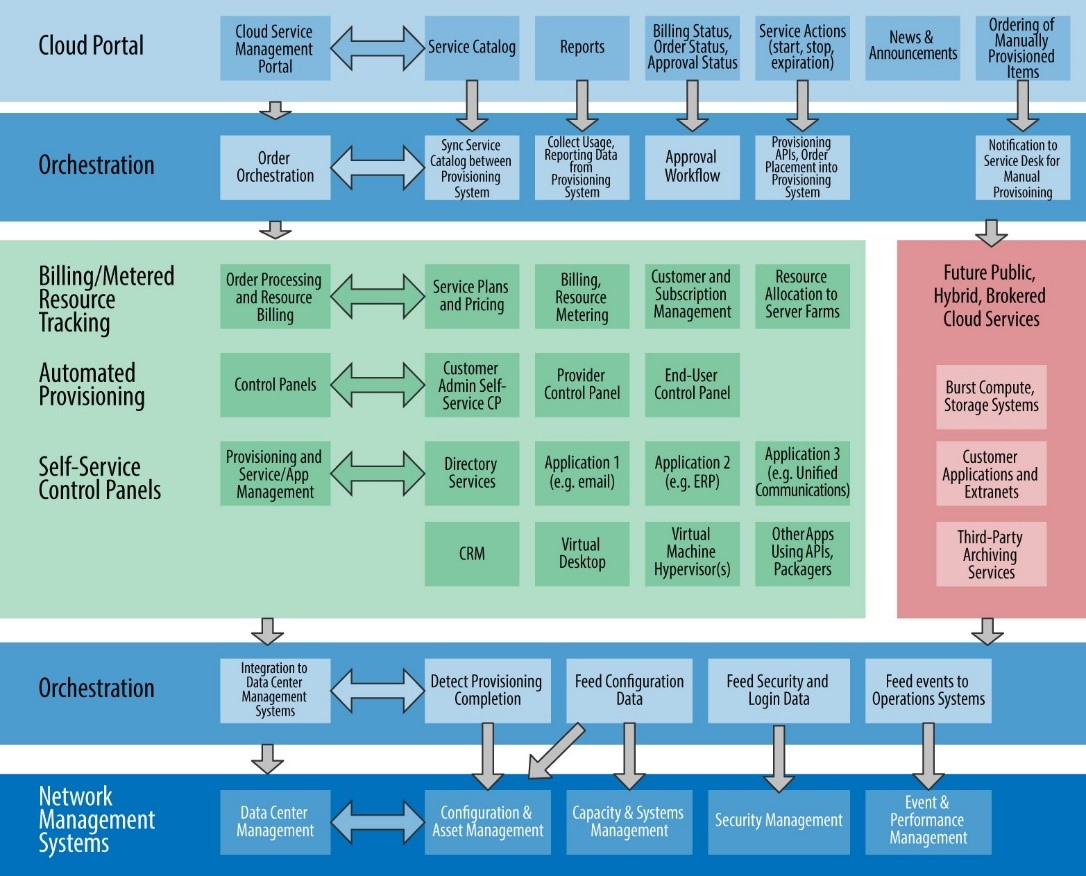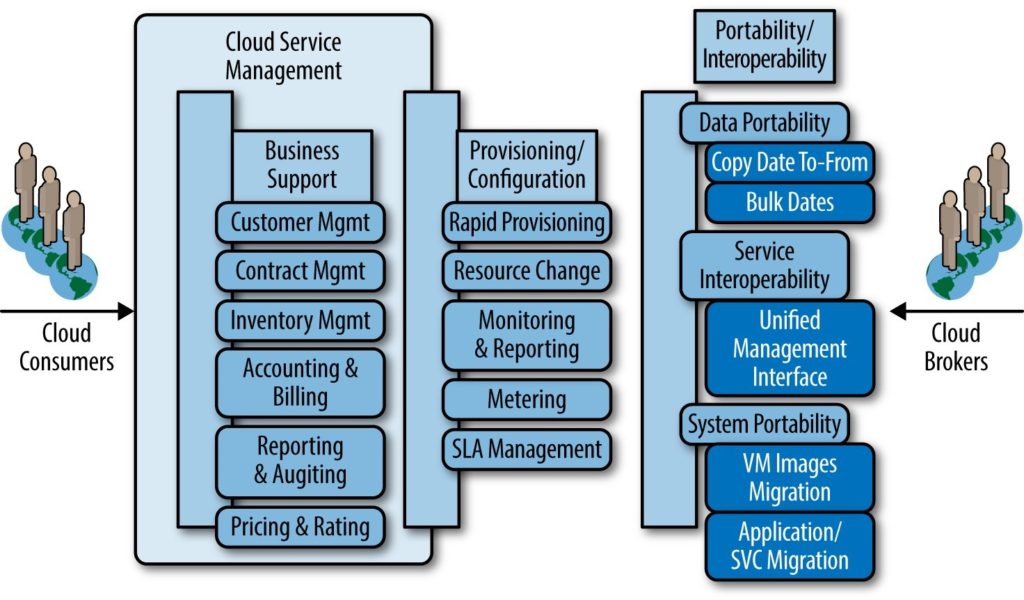Managing cloud systems and orchestrating workloads is a primary concern as well as a learning curve for organisations deploying a cloud architecture. Important areas of Cloud Management include:
- The Architecture (and documentation), of a cloud management platform
- Orchestration and automated provisioning
- Using ServiceNow or some other orchestration platform to automate the deployment (including approvals) of dev-test-production environments
- Cost efficient Systems management of VMs and workloads
- Multi-Cloud, or Hybrid Cloud Management (putting workloads and applications on the most appropriate Cloud platform)
- Multitenant self-service control panels
- System extensibility and API integration
- Build versus buy, for cloud management platforms
- Cloud management best practices
The cloud management system is one of the most important components to consider when planning, deploying, and operating (or consuming) a cloud service. In a public cloud environment, the customer might only utilize a fraction of the overall cloud management platform—usually just the ordering and self- service portal hosted by the public cloud. In an enterprise private cloud, the management system makes it possible for organizations to provision, track billing and utilization, and manage the entire cloud infrastructure. Lessons learned from the first generation of cloud providers and private cloud deployment has clearly shown an under-appreciation of the importance of the cloud management platform. The cloud management platform is the true core for automation, orchestration, workflow, resource tracking, billing, and operations. ServiceNow integrated with AWS for example, can greatly improve the standard, and cost-effective deployments of applications, within a digital-management approval process.
Key Take-Away
A well-designed, modular cloud management system provides a cloud portal, orchestration, workflow, automated provisioning, and integrated billing/resource metering capabilities.
In an enterprise private cloud deployment, cloud management tools are the most underestimated or overlooked component. Using just a hypervisor platform for server virtualization is not the same as a full cloud management system that provides multitenant online ordering, approval workflows, customized automated provisioning, resource utilization and financial tracking, self-service application administration, and reporting.
The figure below shows a vendor-agnostic example of the primary functions of a cloud management system. These functions are presented in three functional layers. Each layer integrates with the layer directly above and below it.

For the purposes of illustration, the top layer represents the client-facing web portal on which consumers can place orders, manage, and track their cloud service subscriptions. The middle layer represents the automation, orchestration, workflow, and resource management functions. The bottom layer is the network management layer. This is where systems monitoring, security, and capacity management functions monitor the cloud infrastructure and integrate with existing data-center operational management tools.
It is very important to note one function that is not included in the cloud management system: the hypervisor. There can be several of these including those hosted at other cloud providers.
The next Figure depicts a detailed functional architecture of an ideal cloud management system. There are dozens of ways to show a detailed functional architecture and they will vary depending on cloud management software vendor.

From the above figure we can see that the orchestration levels are both above and below the automation system. This is an attempt to show that orchestration activities occur both pre- and post-initial provisioning. This could also be represented as a circle surrounding the boxes in the middle of the architecture diagram.
The orchestration system makes the connections, integration, and data interchange between other layers of the architecture, which allows software from various companies to be integrated when necessary. Workflow and business process logic is normally part of the orchestration layer. There can be multiple instances of the provisioning systems shown in those same middle boxes. As new cloud providers or technologies are added, these additional provisioning systems would integrate with the orchestration system, facilitating modular additional functionality to your cloud without changing the other layers that have been integrated and are in production operations for your business.
The network management layer at the bottom represents the operations, security, asset, configuration, and software licensing functions that the cloud provider uses to manage the entire infrastructure, including all legacy IT systems, private cloud, and any hybrid integration to third-party cloud services.
The National Institute for Standards and Technology (NIST) has also published a high-level diagram showing the functional capabilities for cloud service management
NIST Model:

NIST model for cloud service management (Source: NIST, Special Publication 5-500-291 version 2, July 2013)
Next article will present a use case for Orchestration.